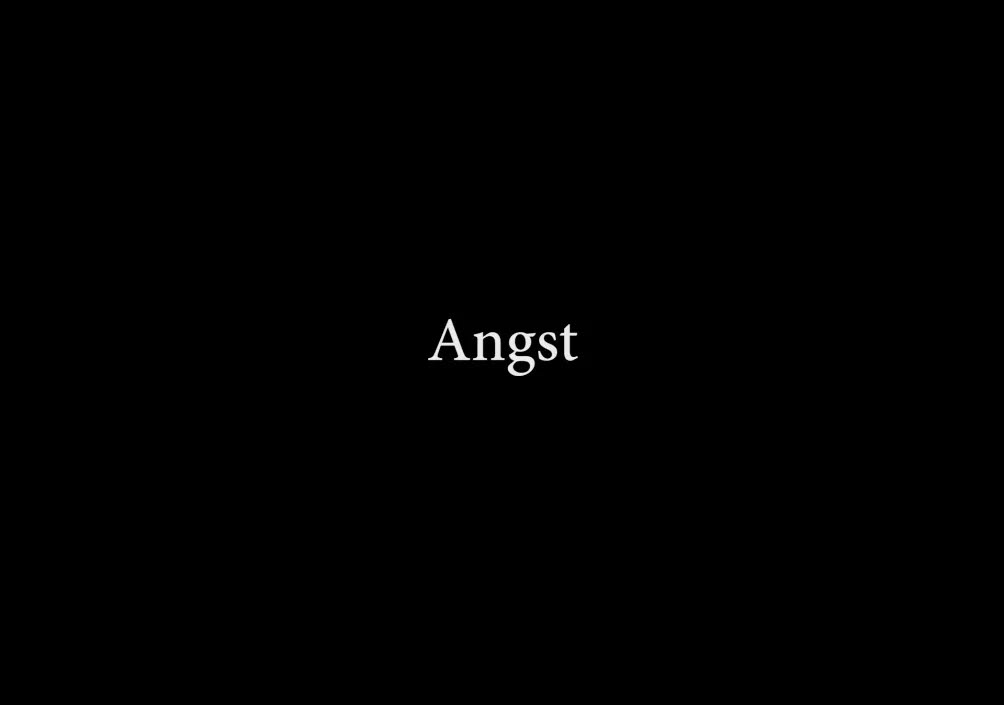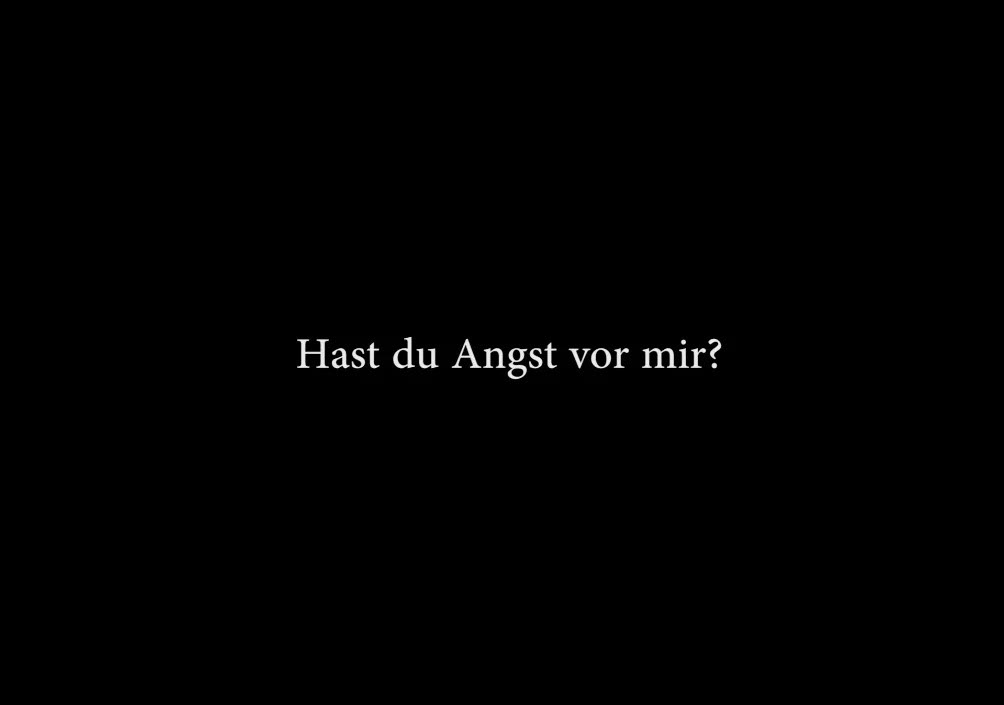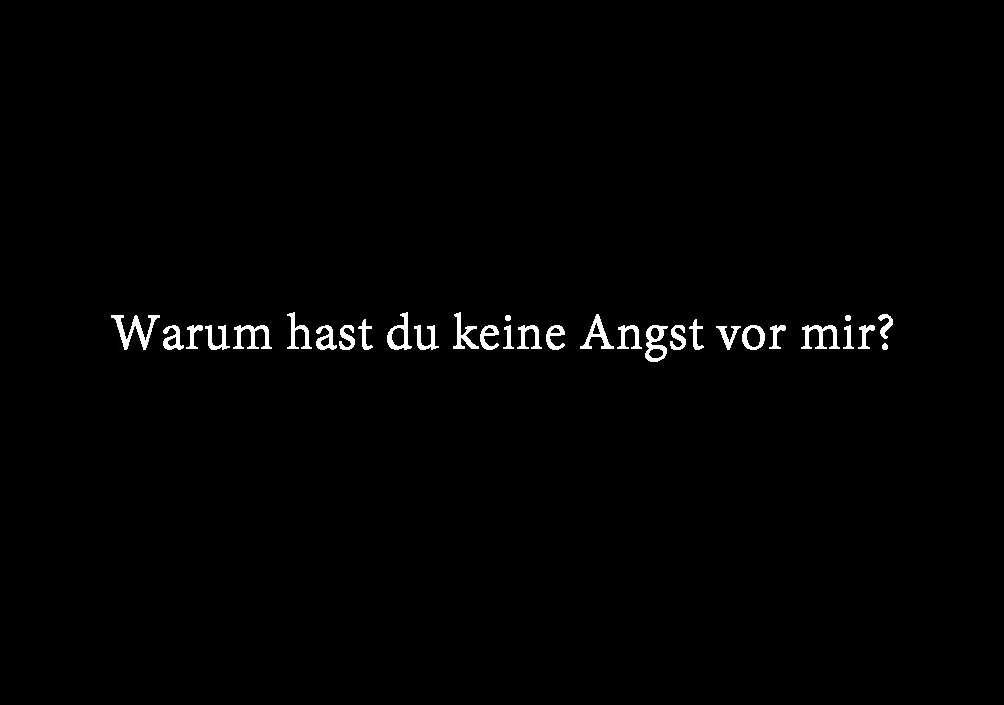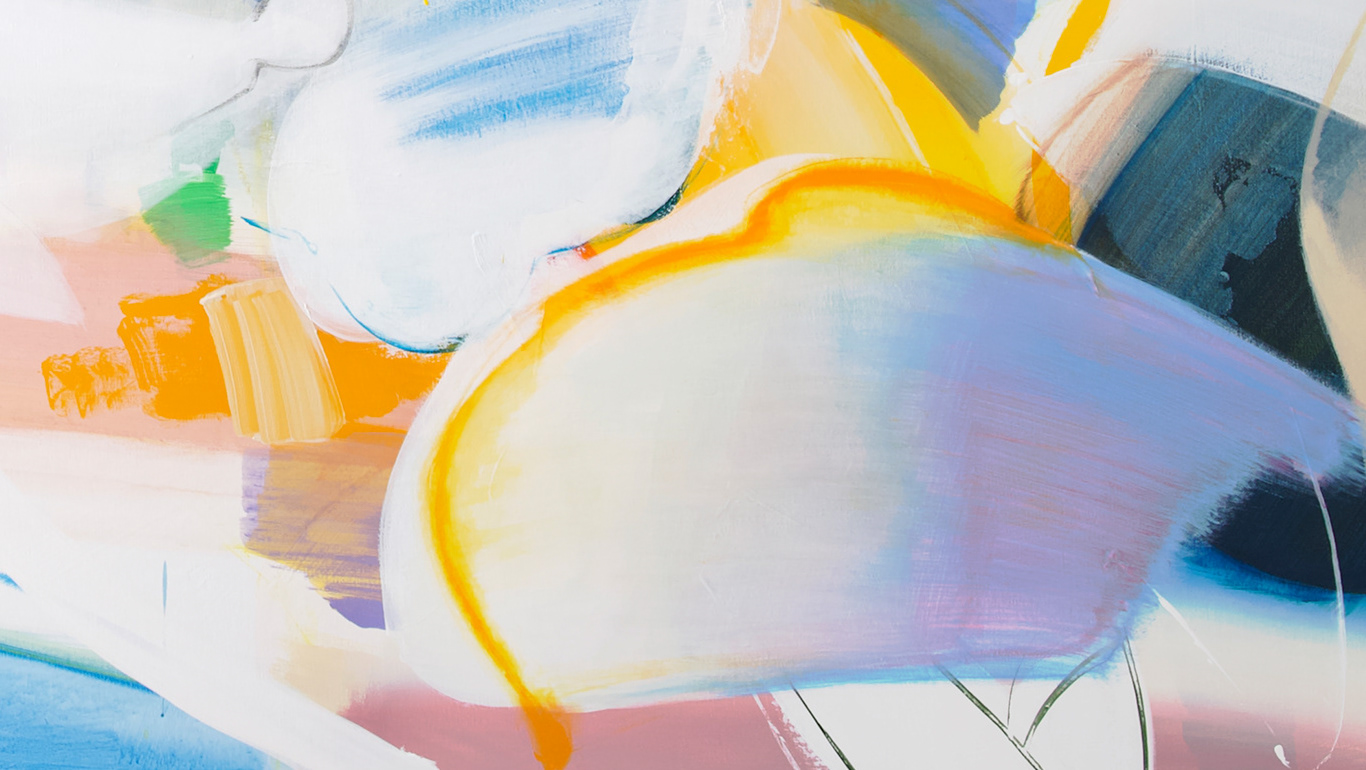Rundgang - Tage der offenen Tür 2017, Weissensee Academy of Art Berlin, Germany
22 - 23. July, 2017
DemOCRacY, 'Mixed media installation', dimension variable, 2017
DemOCRacY, 'Mixed media installation', dimension variable, 2017
Edge.piraeus
Kastela Art Center, Piraeus, Athens, Greece
7 - 18. April, 2017
DemOCRacY, 'Mixed media installation', dimension variable, 2017
Restricted democracy makes people cry. On the other hand, when democracy stands to the fore and claims its just the only rational way of decision making, it still feels like violence sometimes. Narrowed. Expanded. It has all the time violence and crying within.
Secondary evil. Can’t find a better thing to chose. Staying just as a gesture or slogan. – democracy.
A paper folded itself, written on it ‘Democracy’.
The moment when the paper is folded, it can be seen just ‘DOCRY’.
Unfolded moment interrupts peoples movement
A paper folded itself, written on it ‘Democracy’.
The moment when the paper is folded, it can be seen just ‘DOCRY’.
Unfolded moment interrupts peoples movement
Kiwan Choi
Edge.piraeus
Starting March 30th 2017, a group of about twenty artists, currently enrolled at the weissensee academy of art, together with a group of contributors from the Athens School of Fine Art, will collaborate on a symposium and on presentations around the Kastela Art Center in Piraeus, and The Art Foundation (TAF) in Athens.
In English, being on the edge, or being edgy, usually figuratively refers to being nervous, aware of imminent danger, as in standing on the edge of a cliff, or on the edge of disaster. On another level, Piraeus, as an important port, also reflects a notion of an edge, in particular topographically, one of the (many) edges of Europe. And what has been termed „the Greek Crises“, already has become a European crisis, the background against which we can examine the question of the most important values representing the Euro-pean idea.
Art cannot offer any solutions in this respect, but it can help to contribute different images and ideas. The questions that have informed the artistic dialogue leading to this project can be summed up in a few core questions: How do structures imposed on a society affect its citizens? Does a „the least evil“ agenda lead to the death of democracy? How can artists study, survive and stay active under extreme conditions, how can artists continue to reflect and shape the society, even in extraordinary circumstances?
Athens is a logical location for this artistic research, as it is not only historically and culturally an iconic city, it also has come to represent the future, as an international and dynamic metropolis, that has come to evoke a terminology and imagery of crisis, as well as attracting public discourses about solutions, as in the upcoming edition of documenta.
Within these objectives everything appears interconnected – the private, the public and the political, the local to the global, from downsizing to uprising. These very contemporary complications of inter-personal, inter-institutional and inter-national relations in the context of this project will be reflected primarily in a sense of awareness of the participants, and their choice of topics. These range from aspects of the experience of everyday life in Athens and of the results of austerity measures imposed on Greece by the EU, but also address stereotypical statements of left wing idealism, questioning the uprising and its medial reflections.
Stimulated by discussions about texts by Judith Butler (Notes towards a Performative Theory of Assembly), Franco „Bifo“ Berardi (The Uprising – On Poetry and Finance), Giorgio Agamben („Stasis“ – Civil War as a Political Paradigm), but also the writings of Hannah Arendt and Panajotis Kondilys, to name but a few, the artistic approaches will consist of experiences with and reflections on the contemporary urban environment and its interpretations of the Greek legacy.
They also include the development of communicational models between capitalistic human-human interactions and new lifestyles. Further motifs will involve representations of activism and social transformation, community and migration, democracy and mass media, the plots of memory and the personification and development in ancient tragedies and comedies.
These ideas are already showing a tangible influence on topics and formats of artistic production, both in individual artistic research, as in experimental, performative and participatory practices. Most works will be produced onsite and take the form of performed displacements, secret experiments and experiences, newly invented objects, live performances, photographs and films.
Organisation and curating:
Athens: Nikos Tranos, Loukas Loukidis, Lydia Vairaktaraki
Berlin: Hannes Brunner, Guy Féaux de la Croix, Ulrike Mohr, Andreas Schlaegel, Maria Turik
Our wish
Today is an Uncanny Site - Synaesthesia
Exhibition project in the bunker of the Galerie Wiensowski & Harbord, Berlin, Germany
07 -14. Juli, 2017
우리의 소원 / Our Wish, 'Mixed media installation', 60 x 60 x 90 cm, 2017
‘Our Hope’ was the only song that shared South and North Korea. In North Korea, however, it was designated as a prohibited song in 2016. It became a song that is no longer sung in South Korea or disappears in the indifference. The missing song is sung in the buried space.
‘Unser Wunsch’ war das einzige Lied, das Süd- und Nordkorea teilten. In Nordkorea wurde es jedoch 2016 als verbotenes Lied bezeichnet. Es wurde zu einem Lied, das nicht mehr in Südkorea gesungen wird oder in der Gleichgültigkeit verschwindet. Das verschwundene Lied wird im vergrabenen Raum gesungen.
Kiwan Choi
SYNAESTHESIA
Today is an Uncanny Site – Synaesthesia
Often, underground spaces are part of an acquainted network. The physical experience of darkness, narrowness and moisture evokes unforseen imagination, hiding-place, transit space. The uncanny becomes a fragile state of disturbing, spatial disorientation. In July students from the weissensee academy of art berlin present their works in a former shelter. The term synaesthesia refers to the interconnection of several physically separated areas of our perception such as the combination of colors with temperature, numbers, letters and sounds. With sculpture, installation, video and performance, the artists develop individual, location-specific formats and open up the content-related spaces as a dialogue of a contemporary sculpture discourse.
Curating: Ulrike Mohr, weißensee academy of art berlin
Rund ums Herz
HECKE
KUNSTPUNKT Berlin, Germany
01 - 23. July, 2017
마음의 둘레 / Rund ums Herz, 'Mixed media installation', 80 x 60 x 75 cm, 2017
In meinen Arbeiten verstecken sich Geschichten, die wie ein Mysterium ahnbar werden. Ich projiziere meine Erfahrungen oder meine Gefühle in einen Raum, indem ich in diesem Raum ein Objekt seiner Funktion enthebe und damit einen anderen Kontext öffne.
Die Tendenz zur Reduktion, um nach dem Wesentlichen zu suchen, setze ich meiner Auffassung »Mehr ist besser« entgegen. Sobald sich die Installation als narrative Sphäre offen ausdehnen kann, ohne nur eine Message-Ebene zu bedienen, kann Kommunikation und Teilnahme beim Publikum entstehen.
Die Tendenz zur Reduktion, um nach dem Wesentlichen zu suchen, setze ich meiner Auffassung »Mehr ist besser« entgegen. Sobald sich die Installation als narrative Sphäre offen ausdehnen kann, ohne nur eine Message-Ebene zu bedienen, kann Kommunikation und Teilnahme beim Publikum entstehen.
Kiwan Choi
HECKE
This exhibition - a cooperation between artists from weißensee kunsthochschule and art history students from Humboldt-University - explores new ways of curating. Out of their democratic exchange arises the formal structure of the exhibition, where every artist is given 4,16 sqm to show her/his artwork. The title HECKE refers to the interplay between two gardens seemingly separated by a hedge, yet actually thriving on the exchange that is taking place at this lively and dynamic border. We have been growing our metaphorical hedge - at times more wild, at others more cultivated - over the past six months.
Curators: Mette Kleinsteuber, Luise Mörke, Elisabeth Stumpf
Guest students: Rei Matsushima, Natalie Neumaier
TEILNEHMER
Ann-Charlotte Gerlach, Annemarie Braun, Eleonore Weber, Gintare Simutyte, Irene Fernández Arcas, Julia Dreier, Kiwan Choi, Laura Vargas Samudio, Lukas Maibier, Magdalena Beger, Manuel Tayarani-Dastmalian, Muriel Anna Tauber, Nina Langbehn, Oliver Arendt, Oskar Zaumseil, Rahel Hanna Ruth Goetsch, Sebastian Pöge, Seoyoung Won, Tillmann Lange, Uy Nguyen Huu, Yanchuan Yang, Yehudit Yinhar
Ann-Charlotte Gerlach, Annemarie Braun, Eleonore Weber, Gintare Simutyte, Irene Fernández Arcas, Julia Dreier, Kiwan Choi, Laura Vargas Samudio, Lukas Maibier, Magdalena Beger, Manuel Tayarani-Dastmalian, Muriel Anna Tauber, Nina Langbehn, Oliver Arendt, Oskar Zaumseil, Rahel Hanna Ruth Goetsch, Sebastian Pöge, Seoyoung Won, Tillmann Lange, Uy Nguyen Huu, Yanchuan Yang, Yehudit Yinhar
BETREUUNG
Prof. Pia Linz, Hanna Hennenkemper
Prof. Pia Linz, Hanna Hennenkemper
LINKS
www.heckeausstellung.de
www.heckeausstellung.de
Flower in the bottle
Böse Blüten
Projektraum Bethanien - Kunstquartier Bethanien Berlin, Germany
8 – 17. Januar 2017
Flower in the bottle, 'Mixed media installation', dimension variable, 2017
Böse Blüten – eine Ausstellung von Studierenden und Absolvent_innen der weißensee kunsthochschule berlin im Projektraum Bethanien
Blüten werden gemeinhin mit dem Schönen und Guten assoziiert – was aber ist mit jenen schrecklich schönen Blüten, welche das Böse treibt?
Die Ausstellung zeigt solche Blüten und Bilder, die auf dem Nährboden der Auseinandersetzung mit dem Bösen in all seinen Zwischentönen gedeihen. Dabei geht es um Fragen nach dem Wesen des Bösen: Ist es bereits mit der Schöpfung bzw. der Vertreibung des Menschen aus dem Paradies auf die Welt gekommen, unterliegt es historischen Veränderungen oder ist es vielmehr eine allgemeine moralische Konstante, welche unabhängig von Zeit und kulturellen Grenzen existiert?
Angesichts der aktuellen geopolitischen Entwicklungen stellt sich gerade heute die Frage nach dem Bösen mit großer Dringlichkeit, wobei die Grenzen zwischen Gut und Böse zunehmend verschwimmen. Es gibt nicht mehr hier die Guten und dort die Bösen, vielmehr gilt es, diese Kategorien und damit die eigene Positionierung tagtäglich neu zu hinterfragen.
Wir sind die Guten und die anderen sind die Bösen – dies zu behaupten ist ein so gefährlicher wie weitverbreiteter Trugschluss. Und wie geht die Kunst mit dieser neuen, veränderten Realität um? Was macht uns als Individuen in einer sich ständig selbst optimierenden Welt Angst? Gibt es böse Kunst – oder sind es nicht wir als Betrachter, welche erst entsprechende Wertungen vornehmen?
Eine breite Auswahl an Gemälden, Zeichnungen, raumbezogenen Objekten, Filmen und Performances zeigt die sehr unterschiedliche Auseinandersetzung der Studierenden mit dem Bösen in vielen seiner Facetten. Damit werden die Kunstwerke zu einem Teil jener Kraft, die stets das Gute will und stets das Böse schafft. Doch umgekehrt bedeutet dieses mephistophelische Motto: Wer Böses will, schafft auch Gutes und Schönes – wie diese Ausstellung in großer Vielfalt zeigt.
Christian Breuer
Betreuung: Friederike Feldmann, Alexander Wagner, Christian Breuer
Konzept: Friederike Feldmann, Alexander Wagner
Teilnehmer_innen:
Volodymyr Bevza, Johannes Bosisio, Sascha Brylla, Marlene Zoe Burz, Paula Carralero Bierzynska, Finn Carstens, Kiwan Choi
Matthias Esch, Paris Giachoustidis, Claudia Just, Dana Kirijak, Manuel Kirsch, Elias Klein, Soline Krug, Martin Maeller, Viktoria Maliar
Hans Meier, Jakob Nagel, Lorenz Pasch, Fritz Poppenberg, Maria Evrydiki Poulopoulou, Martin Remus, Julia Schaller, Paula Schwabe
Flavia Stagi, Björn Streeck, Marta Vovk, Dagmara Wachulskaya
Hörstein
Rundgang - Tage der offenen Tür 2016, Weissensee Academy of Art Berlin, Germany
16 - 17. July, 2016
Hörstein, 'wall drawing and installation with stone, electric fan, white string', dimension variable, 2016
This work is created based on my personal experience.
'Hörstein', which is the title of the work, is a specific stone that I used while working in the border between South Korea and North Korea. The border between the South and North is a restricted area where no one is allowed to cross. I watched with my eyes during the day, but depended on my senses at night. Due to the limited visions at night, we used 'auditory stones', a sort of sound trap. It's set up with colored stones, that are inserted into barbed-wire fence. When anyone tries to cross the fence, the stone falls down, making a noise.
Whenever the stone fell off, my duty was to go to that place where it fell and to shoot the perpetrator who might be armed. The stones continued to fall off for two years, during the time I was enrolled. The two groups of people who each had duty to eliminate each other upon encounter do not have chances to engage with one another, other than on the television. We had been divided for 60 years on the extremely polarised political ideology and now we have different languages and culture. Initially, the tone of the mission was serious. However, when I realized that nothing but stones fall off by the wind, the mission lost its seriousness and became something of a ghost or humor to me. 'Hörstein' is a metaphor for the boundaries between people, which exists as a imaginary entity like a ghost in my mind that nevertheless frightened me but did not exist as a real entity.
'Hörstein' is a variable size installation composed of wall drawings, electric fans without blade, stones painted in red and white, and strings. On the wall is drawn a line portraying the abstracts of falling stones. The shape of the stones is broken but are connected simultaneously by the red line that crosses the stones. There are electric fans without blade on the floor that moves to the left and the right with its functional utility removed. At the end of the electric fans, several strings are tied and the strings are connected to the stone through a loop on the ceiling. The hanging stones moves up and down according to the movement of the electric fan, but it is adjusted not to touch the ground. As soon as the stone is about to fall to the ground, it moves up again and then moves back to the ground. The encounter at the border was a moment of extreme fear. In the modern society where increasing number of people are being forced to engage with others and paradoxically a sheer sense of relief is gained based on the walls created between them. The work demonstrates us nevertheless being willing to talk to strangers and wanting to demonstrate that it is important to break our boundaries and let us out.
kiwan choi
Angst



Angst, Mixed media installation, KHB, Germany, 2016
Video still cut







Verwandlung
Rundgang - Tage der offenen Tür 2015, Weissensee Academy of Art Berlin, Germany
18 - 19. July, 2015
Verwandlung, 'Mixed media installation', 2015

